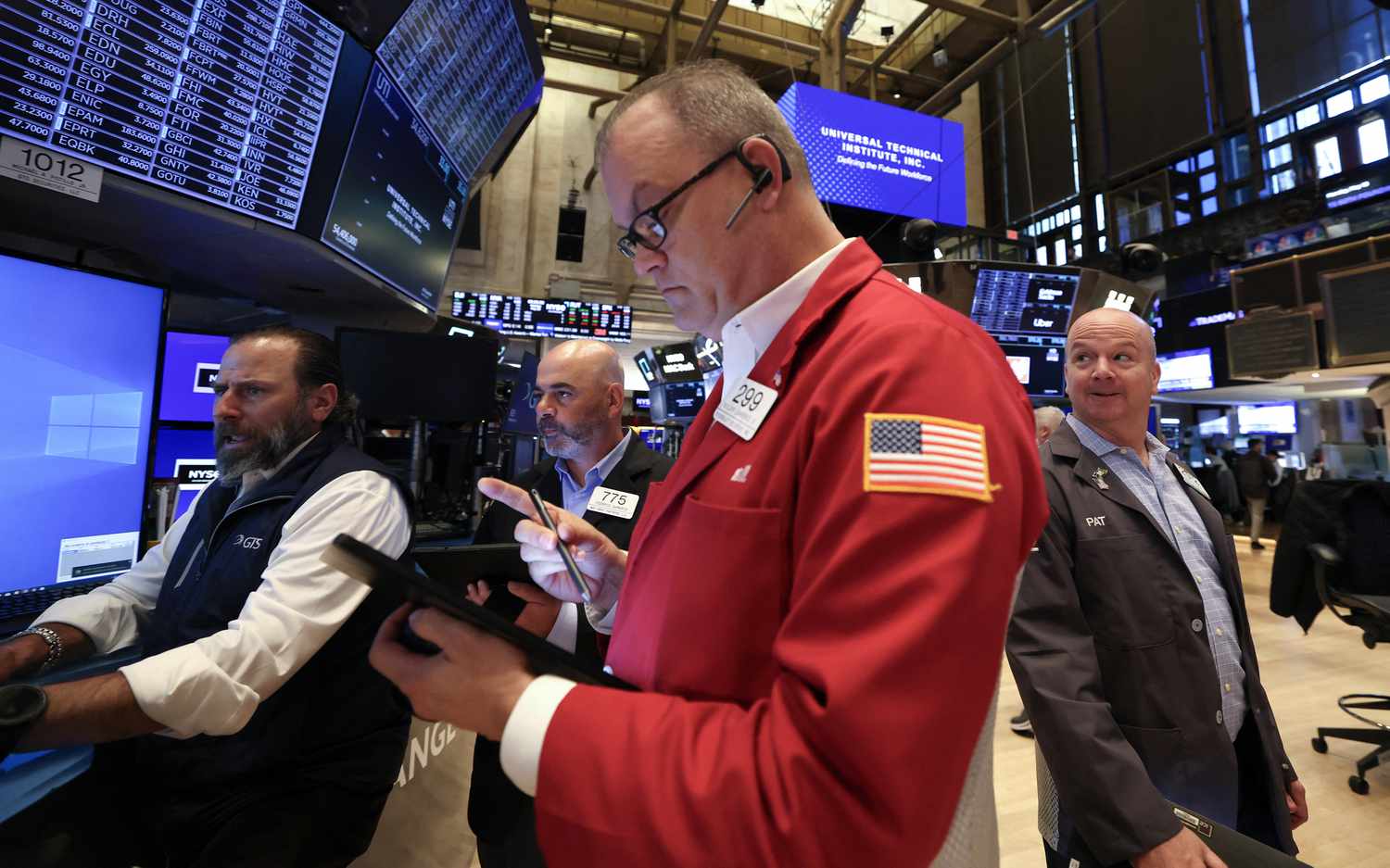Stocks soared in May, lifted by easing trade tensions between the U.S. and China, a strong end to first-quarter earnings season, and evidence the economy remains on solid footing. The S&P 500 and Nasdaq Composite both notched their best months since November 2023, rising 6.2% and 9.6%, respectively.
Trade policy is likely to remain Wall Street’s primary focus in June. With President Trump’s “Liberation Day” tariffs expected to go back into effect on July 9, investors will be hoping the White House strikes more trade deals in the coming weeks. Wall Street will also be watching Congress, where Republicans are hammering out the details of Trump’s ‘One Big, Beautiful Bill.’
Below, we look at a few stocks to keep an eye on this month.
Apple
Tariffs have been the primary focus of Apple (AAPL) investors in recent months, but their attention is likely to shift to artificial intelligence when the company hosts its Worldwide Developer Conference (WWDC) on June 9.
Last year’s WWDC saw the unveiling of Apple Intelligence, the company’s proprietary artificial intelligence offering. Executives touted Apple Intelligence’s personalization and privacy features, and showed off a few AI applications like image and emoji generators.
At this year’s WWDC, Apple is reportedly planning to release a software development kit that enables third parties to build features using the large language models underpinning Apple Intelligence. Apple has disappointed Wall Street and some users with its slow AI roll-out. Opening up Apple Intelligence to outside parties could satisfy the critics by accelerating the development of AI apps for the iPhone and other AI-enabled devices.
Apple shares, weighed down by President Trump’s tariff threats, have lost about 20% of their value so far this year.
Tesla
Now that CEO Elon Musk has left Washington, he’ll be spending much more time delivering on his promise to transform Tesla (TSLA) from an electric vehicle manufacturer to a leading artificial intelligence company.
Tesla is reportedly aiming to launch its new robotaxi service on June 12 in Austin, Texas, about eight months after Musk first unveiled prototypes of the company’s completely autonomous “Cybercab” and “Robovan.” The rollout is arguably the most high-profile test yet of Tesla’s full self-driving software. The public and Wall Street’s perception of its success will likely affect how quickly Tesla expands the robotaxi service beyond its home turf of Austin.
The stakes are high for Tesla. Sales plummeted in the first quarter as consumers across the globe revolted against Musk’s controversial work with the Department of Government Efficiency. Shares shed more than 50% of their value between hitting a record high in mid-December and reporting disappointing first-quarter earnings in April.
Musk’s decision to step away from government—first intimated during Tesla’s most recent earnings call—has resuscitated Tesla’s ailing stock. Shares are down about 14% since the start of the year but are up 60% from their lows in early April.
Nike
Nike (NKE) is scheduled to report results for the quarter ending May 30 after the closing bell on Thursday, June 26, and investors will be bracing for signs tariff mayhem is weighing on earnings.
Nike’s fiscal fourth-quarter report will be one of the first from a major U.S. consumer goods company to encompass the brief implementation of President Trump’s “Liberation Day” tariffs and the weeks when duties on Chinese goods started at 145%.
Executives said on Nike’s last earnings call they expected tariffs on China and Mexico to cause profit margins to compress by 4 to 5 percentage points in the quarter. However, that forecast was in March, before tariff rates went through the roof, and Nike hasn’t updated its guidance since.
Granted, Nike has a relatively diversified supply chain. Bank of America analysts estimate it manufactures just 18% of its footwear and 16% of its apparel in China. Still, its results may give investors an idea of how April and May’s tariff mayhem will show up in the next round of corporate earnings.
Nike shares have lost about 20% of their value since the start of the year.
UnitedHealth Group
UnitedHealth Group (UNH) was the worst-performing stock in the S&P 500 in May, shedding about a quarter of its value. The company enters June with former CEO Stephen Helmsley, who led the company from 2006 to 2017, back in the driver’s seat to navigate a tangle of controversies.
Shares tumbled nearly 20% in a day mid-month when the healthcare giant withdrew its full-year earnings guidance, citing elevated care activity and costs, and announced its CEO was stepping down “for personal reasons.” The stock slumped by double-digits again just days later following reports the Justice Department was investigating UnitedHealth for Medicare fraud. No sooner had shares recovered from that sell-off than the stock tanked again after a report the company paid nursing homes secret bonuses to reduce hospital transfers.
Despite the investigations and difficult business environment, May’s slump has left the stock at a historically low valuation. Of the 16 UnitedHealth analysts tracked by Visible Alpha, 13 rate the stock a buy. Wall Street’s average price target of about $415 represents nearly 40% upside from the stock’s close at the end of May.
UnitedHealth shares have lost 40% of their value since the start of the year.
Solar Stocks
Solar stocks tumbled in May after the House of Representatives approved tax and spending legislation that, if enacted, would effectively kill Biden-era tax credits meant to promote residential and industrial solar projects. The bill takes a “sledgehammer” to the clean energy provisions of Biden’s Inflation Reduction Act, according to Jefferies analysts, who called it a “worse than feared” scenario for the solar industry.
Shares of Enphase Energy (ENPH) and SunRun (RUN) tumbled 20% and 37%, respectively, the day after the House’s vote, while First Solar (FSLR) stock slid 4%.
The bill now goes to the Senate, where lawmakers could propose revisions that would need to be reconciled with the House’s version to reach the president’s desk. Republicans on Capitol Hill have given themselves a July 4 deadline, meaning any reprieve for solar companies is likely to come in the next month.
Shares of Enphase Energy are down about 40% since the start of the year, while SunRun and First Solar have shed 19% and 10%, respectively.


















